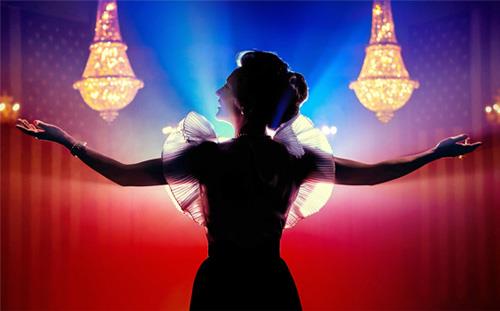
Back in 1972, American society seemed to be transforming.
"You just had the Civil Rights Act and the Pay Equity Act," said Cate Blanchett (top) at the Television Critics Association press tour in January. Blanchett, a producer and the star of Mrs. America, an ambitious mini-series beginning Wednesday on Hulu (as part of FX on Hulu), added: "So, there was already change afoot."
The next step was the Equal Rights Amendment. It seemed easy, said director Ryan Fleck. "It had Republican support, it had Democratic support – which is sort of unheard of nowadays."
The ERA sailed through the House, 354-24, and the Senate, 84-8. Hawaii ratified it that same day, Delaware and New Hampshire the next day, Iowa and Idaho the day after that.
Then Phyllis Schlafly (Blanchett) stepped in. That's what Mrs. America is about.
The nine-part Hulu mini-series highlights many feminist icons. There's Gloria Steinem (Rose Byrne), Shirley Chisholm (Uzo Aduba), Betty Friedan (Tracey Ullman), Bella Abzug (Margo Martindale), Jill Ruckelshaus (Elizabeth Banks) and more.
These women had star power. Then they collided with someone they'd never known (Schlafly), from a place they'd never heard of (Alton, a St. Louis suburb, on the Illinois side of the Mississippi river).
She grew up in St. Louis, graduated Phi Beta Kappa from Washington University and got a Master's Degree in government from Radcliffe (later adding a law degree from Saint Louis University).
At 25, she married Fred Schlafly, a lawyer (15 years her senior) from a wealthy St. Louis family. At home, while raising six children, she began writing books and newsletters on arms treaties (anti), Barry Goldwater (pro), Communism (anti), and Nelson Rockefeller (fiercely anti).
At first, said Blanchett (who portrays her), she "didn't have an issue with the Equal Rights Amendment. She thought it was a piece of fairly innocuous political business, and her primary focus was defense."
Then she began to worry that the ERA would force the drafting of women and the weakening of the military. She saw it as a Communist issue and had the tools to fight it.
"Phyllis had a network of supporters from the late '60s when she built her base," said Dahvi Waller, creator and writer. "She had this newsletter, The Phyllis Schlafly Report…. I call her the original disruptor. She was an incredibly effective grassroots organizer."
And, yes, this mini-series was crafted by proud feminists. "The Gloria Steinems and the Bella Abzugs are the women on whose shoulders we – as current feminists – are standing," Banks said.
Still, Schlafly is painted sympathetically. "I don't think we benefit from painting the other side…as monsters," Waller said. "I don't think there is any benefit to portraying the heroes as perfect."
The reformers lived amid chaos, she said. "What really struck me was how messy they were. They're complex. They're contradictory in nature. They quarrel. There's joy, there's love, and there's hate."
And we know a lot about them. "Every single one of these women wrote a book," said producer Stacey Sher, "Phyllis wrote several books; obviously, Gloria has written several."
In the main cast, only Sarah Paulson has a fictional character. She calls Alice "a devout Catholic and a very dedicated homemaker. I myself am not a dedicated homemaker, so I thought it was sort of interesting."
Other actresses stepped into giant roles. Ullman talks fondly of Friedan; "when I first came to America, I loved the chutzpah of the Jewish-American." Martindale admits she once thought of Abzug only as "the loud, obnoxious woman with a hat," but she now finds her a "remarkable" congressman, voted by colleagues as the third-most-influential person in the 435-seat House.
They were the icons of the 1970s. It's an era that Mrs. America re-creates with skillful actors and designers and, Blanchett said, with "a lot of polyester."